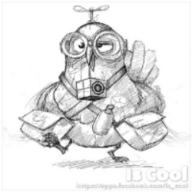一句句子不能多過一個動詞
除非加上
1. relative clause
2. Gerund
3. to-infinitive
4. 連接詞
希望可以 教我點用 1-4
因為我而家都係憑感覺寫文章, 有時用錯,有時用岩
但我而家想知正確用法.
除左以上,
重有冇其他方法令 句子多過一個動詞?
如有,教埋我.
唔該
grammar 一問
2008-07-09 8:18 am
回答 (3)
2008-07-10 2:22 am
✔ 最佳答案
www.xanga.com/cheukling0919/661071018/item.htmlto infinitive and gerund
一些動詞後面可以跟帶to不定式動詞(to infinitive)或動名詞(gerund),一些時候意思一樣,但一些時候則意思不同。
跟在一個動詞後面的帶to不定式動詞(to infinitive),通常是用於表達意向、動向、目標等等,就是想要、準備、開始或正在做某些事情。
舉例說明:
He started to talk but no one was listening.
他開始發表言論,但沒有人在聽。
She continued to dance even when the music had stopped.
雖然音樂已經停下,她繼續起舞。
to infinitives涉將要或在進行的行動
總而言之,to infinitives涉及一個將要或正在進行的行動。
動詞 “start” 和 “continue”後面有時可改用另一個形式表達,就是以動名詞 (gerund, -ing form)代替to infinitive。
例如:
He started talking but no one was listening.
She continued dancing even when the music had stopped.
在以上兩組例子中,以to infinitives構成的句子,與以-ing forms構成的句子在意義上並無大分別。兩者都表示當事人將要或正在進行的行動。 然而並非所有動詞都一樣。
例如:
He stopped to smoke.
He stopped smoking.
前一句的意思是:他停下來吸煙。
後一句的意思是:他停止吸煙。
stop -infinitive與stop -ing form 意思相反
使用stop -infinitive與stop -ing form的意思完全相反!
當我們用stop to infinitive,意思是停下某一個行動,而進行另一個行動。
例如:
She was practising yoga when the telephone rang. She stopped to answer the phone.
她正在練習瑜伽時,電話響起。她停下來,去接聽電話。
停止行動 用stop -ing form
很明顯是兩個行動,停了前一個,進行後一個。如果想說某人停止一個行動,只能用stop -ing form。
例如:
The little girl stopped crying when her mother gave her a lollipop.
媽媽給她一支棒棒糖後,那個小女孩便不再哭了。
不要說她stopped to cry,除非你想說她停下來,哭起來。
to infinitive與 gerund/- ing form的意思完全相反!!
_____________________________________________
elc.polyu.edu.hk/cill/eap/2004/u6/relativeclauses.htm
Relative clause 分兩類
Defining relative clause
Computer games that involve fighting and shooting apparently have a negative effect on young people.
以relative clause是沒有coma在其前後位置, 它的作用是提供決定的資料, 清楚界定那些電腦遊戲對年輕人有壞影響。
Non-defining relative clause
Albert Einstein, who put forward the theory of relativity, is considered by many as the most intelligent person in human history.
以relative clause是有coma在其前後位置, 它的作用是提供一些額外(但非決定性)的資料,所以就算刪除了它, 亦不損其句子的原意。
________________________________________________
What is a Conjunction?
You can use a conjunction to link words, phrases, and clauses
2008-07-09 18:28:12 補充:
由於字數有限, 請參考有關網頁, 其中還有練習提供。
Co-ordinating Conjunctions
You use a co-ordinating conjunction ("and," "but," "or," "nor," "for," "so," or "yet") to join individual words, phrases, and independent clauses. Note that you can also use the conjunctions "but" and "for" as prepositions.
2008-07-09 18:29:43 補充:
Subordinating Conjunctions
- introduce a dependent clause & indicates the nature of the relationship among the independent clause(s) and the dependent clause(s).
2008-07-09 18:29:54 補充:
e.g. "after," "although," "as," "because," "before," "how," "if," "once," "since," "than," "that," "though," "till," "until," "when," "where," "whether," and "while."
2008-07-09 18:30:21 補充:
Correlative Conjunctions
Correlative conjunctions always appear in pairs -- you use them to link equivalent sentence elements. The most common correlative conjunctions are "both...and," "either...or," "neither...nor,", "not only...but also," "so...as," and "whether...or."
2008-07-09 18:38:13 補充:
遇到學習上的困難而敢放發問, 是一件難得的事! 問完再問, 甚至請教不同的人, 都會令自己獲益, 以致得到全面的答案。 學無止境是正確的!
2008-07-09 18:49:59 補充:
www.uottawa.ca/academic/arts/writcent/hypergrammar/conjunct.html
(website about "conjunction")
參考: elc.polyu.edu.hk/cill/eap/2004/u6/relativeclauses.htm, www.xanga.com/cheukling0919/661071018/item.html,
2008-07-09 5:56 pm
I think your approach is wrong.
1. Gerund, bare infinitive and to-infinitive are not regarded as 'verb'. They do not function as 'verb'. A gerund is a noun.
2. The use of a conjunction is one of the ways to bring out a clause. Sometimes we do not use a conjunction to bring out a clause. Therefore, it is the clause that matters, not the conjunction.
3. Why do you specifically mention "relative clause" instead of "clause" ?
I remember you have asked a similar question a few days ago. Someone has given you a superb answer. It seems that you are still confused.
I hope I have steered you towards the right direction.
1. Gerund, bare infinitive and to-infinitive are not regarded as 'verb'. They do not function as 'verb'. A gerund is a noun.
2. The use of a conjunction is one of the ways to bring out a clause. Sometimes we do not use a conjunction to bring out a clause. Therefore, it is the clause that matters, not the conjunction.
3. Why do you specifically mention "relative clause" instead of "clause" ?
I remember you have asked a similar question a few days ago. Someone has given you a superb answer. It seems that you are still confused.
I hope I have steered you towards the right direction.
2008-07-09 9:32 am
1.relative clause
依個用法可以更加有效指出所指既物體
eg.The woman who owns a restaurant near our school.
who owns a restaurant near our school----依句就係relative clause
如果唔用既話,你就好難知道我所指既係邊個woman.
不過要對番所指物體既類別:
人----who(常用)/that(少用)
物件----that/which(2個都常用)
俾多個eg.你
The book which is blue in colour.
2.Gerund
即係 subject verb verb ing.
依個係對某d動詞先會用既(不過好廣泛)
詞eg. enjoy,go,finish,practise....(指第一個verb)
句eg. I go swimming.
3.to-infinitive
即係 subject verb to verb.
依個都係對某d動詞先會用既(不過都好廣泛)
詞eg. want,decide,forget,try,hope....(同樣指第一個verb)
句eg. I want to buy the hat.
有d verb係可以to-infinitive同gerund一起用架
詞eg. like,dislike,love,hate,begin....
句eg. I like to watch tv./I like watching tv.
4.連接詞
我唔係好識點講,因為e個既範圍好大
sor
不過除左以上4個,以我知道既就仲有1個,
bare infinitive
同to-infinitive&gerund係同一類
都係對某d動詞先會用既,但e個冇咁廣泛
e個係指 subject verb verb.(即係冇變)
詞eg. let,hear,see,make
句eg. Let me go./I see him draw something on the table.
我用左半個鐘親手打字架,希望可以係best answer啦
(有d可能打錯字,請見諒)
依個用法可以更加有效指出所指既物體
eg.The woman who owns a restaurant near our school.
who owns a restaurant near our school----依句就係relative clause
如果唔用既話,你就好難知道我所指既係邊個woman.
不過要對番所指物體既類別:
人----who(常用)/that(少用)
物件----that/which(2個都常用)
俾多個eg.你
The book which is blue in colour.
2.Gerund
即係 subject verb verb ing.
依個係對某d動詞先會用既(不過好廣泛)
詞eg. enjoy,go,finish,practise....(指第一個verb)
句eg. I go swimming.
3.to-infinitive
即係 subject verb to verb.
依個都係對某d動詞先會用既(不過都好廣泛)
詞eg. want,decide,forget,try,hope....(同樣指第一個verb)
句eg. I want to buy the hat.
有d verb係可以to-infinitive同gerund一起用架
詞eg. like,dislike,love,hate,begin....
句eg. I like to watch tv./I like watching tv.
4.連接詞
我唔係好識點講,因為e個既範圍好大
sor
不過除左以上4個,以我知道既就仲有1個,
bare infinitive
同to-infinitive&gerund係同一類
都係對某d動詞先會用既,但e個冇咁廣泛
e個係指 subject verb verb.(即係冇變)
詞eg. let,hear,see,make
句eg. Let me go./I see him draw something on the table.
我用左半個鐘親手打字架,希望可以係best answer啦
(有d可能打錯字,請見諒)
參考: 自已
收錄日期: 2021-04-11 00:45:53
原文連結 [永久失效]:
https://hk.answers.yahoo.com/question/index?qid=20080709000051KK00064

